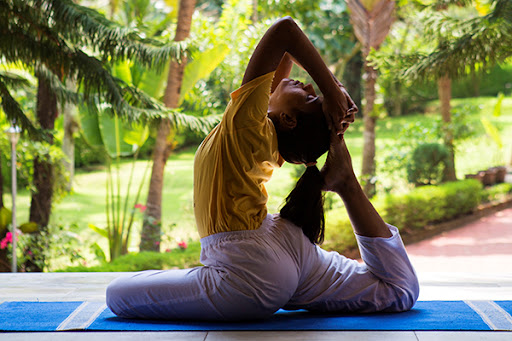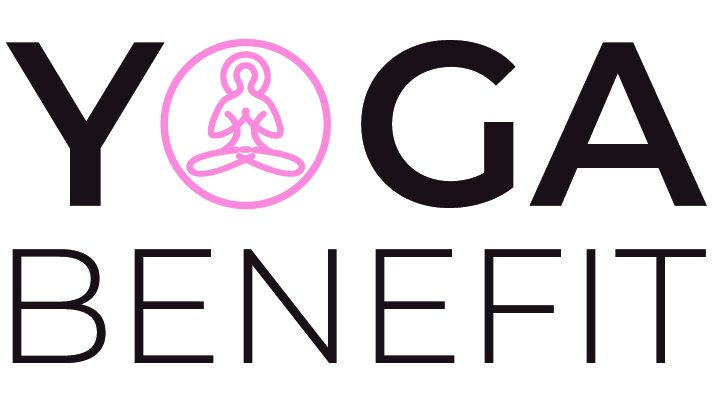For many years, I laughed at yoga. Yoga was not something I did naturally. I was not drawn to the flowing sequences of yoga poses, mindfulness, or even the real benefits of increased flexibility. Get tips, advice, and workouts by joining our community of like-minded people.

5 Yoga Poses Using Resistance Bands
I had my first knock-you-to-your-knees-in-tears back spasm in. I don’t believe I’ve ever felt such severe pain. I could not stand, sit or walk without feeling shooting pains. It was Friday, of course. I didn’t have an urgent care doctor and I didn’t want the cost of a hospital visit. So I stayed at home, took Tylenol, and did what I knew would help: stretch and foam roll. It took me a week before I was able to get over the acute spasm. Then, for the next few years, I had to live with chronic, regular pain. It was sometimes worse than it was good, but it didn’t get any worse until 2013. Then, in 2013, I had another severe spasm. I followed self-care regimens. I saw a chiropractor and used OTC medicine as needed. I also tried a variety of massage balls and foam rollers. I continued to exercise, strengthened my core, ate well, and added a few stretches at the end of my workouts. The truth is, I was constantly in pain.
A New Commitment
After my 2015 spasm, I realized that this wasn’t working. I have to try something different.” My sister claimed that her yoga class had helped her lower back pain. So I committed to doing a 20-minute class each day for the next 30 days and seeing how it felt.
Onita Durability
Yoga is functional and accessible to everyone. It improves movement patterns and corrects muscle imbalances. You will need to be able to move in a full range of motion and increase dynamic flexibility. It wasn’t fancy, just a $15 DVD that I had previously sent me. But for 30 days I kept to the plan. I would walk my dogs and then start the DVD. It was my salvation. It was amazing how much I didn’t feel pain as often or as often. I could go for hours without worrying about my lower back pain. I was able to pick up things from the ground and not worry about my back giving out. I began running again, something I had given up for a while.
Then I started to notice my negative movements and corrected them through simple yoga sequences.
After several months of daily practice, I decided to stop following the same routine and instead began to incorporate my own sequences into my workouts. This was done by adding 15 to 20 minutes after a HIIT session or strength training session. Instead of static, static stretching, flowing sequences of yoga seemed to target multiple muscle groups simultaneously. This helped me to improve my posture and core strength, as well as flexibility through my hips, glutes and low back, which was all I had problems with. Although it’s been over a year since my last spasms, the pain has not completely subsided. However, I’ve never felt so good in years. Yoga is what gave me my…
Yoga’s benefits are for everyone
Yoga is for everyone. My own negative views, “It’s too simple, it won’t benefit me enough,” were ignorant, self-defeating, and shortsighted. Yoga isn’t just for women. Yoga isn’t just for those who are flexible or don’t mind sweating. If you like to sweat, you might consider a hot yoga class. Yoga is functional and accessible to everyone. It improves movement patterns and corrects muscle imbalances. You will need to be able to move in all directions and increase your dynamic flexibility. Deep breathing is encouraged to help circulate oxygen and nutrients in your cells. Yes, there is a mindfulness component. But it doesn’t need to be in a hippie-dippie way. It can help you move more thoughtfully and connect your brain to your body to improve coordination and balance.
These benefits are not enough to warrant yoga, according to science.
* Reduces anxiety and promises promising results as a complement to treatment for depression
* Relieves arthritis patients of pain and improves their function
* Helps improve breathing by playing a complementing role in asthma treatment
* Reduces the risk of developing cardiovascular disease or diabetes
* Improves quality of sleep, even for patients with insomnia
The Four-Pose Challenge
Signing up for a yoga class in person has real benefits. You have a qualified instructor who will guide you through every pose, offer corrections, and teach you how to breath. To be completely honest, I hesitated to take on in-person classes at first because I was afraid I would feel out of place. Black Swan Yoga TV and DVDs are great options for finding quality instructors as well as a wide range of classes styles, lengths, and focuses.
If that sounds a little out of your comfort zone, you can add these four simple poses to your next workout routine.
They are not the best or most effective yoga poses. Every person is different. However, they are the ones I use the most often for lower back pain relief and mental clarity.
Yoga Squat: The ultimate exercise in full body mobility
Keep your hips slightly wider than your knees, and your weight in your heels. Now, extend your arms out to the sides, and then bring your hands up to your chest. As you press your hips back, bend your knees and squat as low as possible until your glutes touch the ground, you should be able to feel your hips. Keep your elbows aligned with the bottom of your toes by pressing your elbows against your knees. Slowly breathe in and lower your tailbone towards the ground. Then lift your chest to lengthen you spine.
Lower Back Pain: Cat-Cow
Place your palms below your shoulders, knees under your hips, and your back flat. Take a deep inhale and lift your head up. Inhale and reverse the motion. Lower your head with your arms while you keep your tailbone underneath. Then, stretch your back toward the ceiling as if you were a cat. Keep going for three to five more cycles, switching between Cat Pose and Cow Pose with each inhale.
For lower back pain, use a foot pedal and downward dog
From Cat-Cow, you can move into Downward Dog. Take a deep breath and then move into Cow Pose (head, chest up, low back hollowed and tailbone reaching high), and tuck your feet under. Press through your toes on the exhale. Next, lift your knees off the ground and press your hips up. Your body should form an inverted V shape. Press your palms into your feet and your toes as you reach for the ground with your heels. They don’t need to touch. Let your head hang free. Start by putting your feet on the ground. Bend one knee and straighten the other to get a deeper calf stretch. Next, alternate between your legs. Keep pedaling for three to five more breaths.
Beginning Yoga Poses : Yoga Child Pose
Simply lower your hips to transition into Child’s Pose (from Downward Dog) by lowering your hips. Then, balance on your hands and your feet while you are in Child’s Pose. Place your knees on the floor, and spread your legs wide so that your feet touch the ground. Your hips should be pressed back so that you can sit on your heels with your arms extended in front. To lengthen your spine, extend your palms further forward. As your hips become heavier and sink deeper into your heels, you will feel a stretch in your shoulders.
